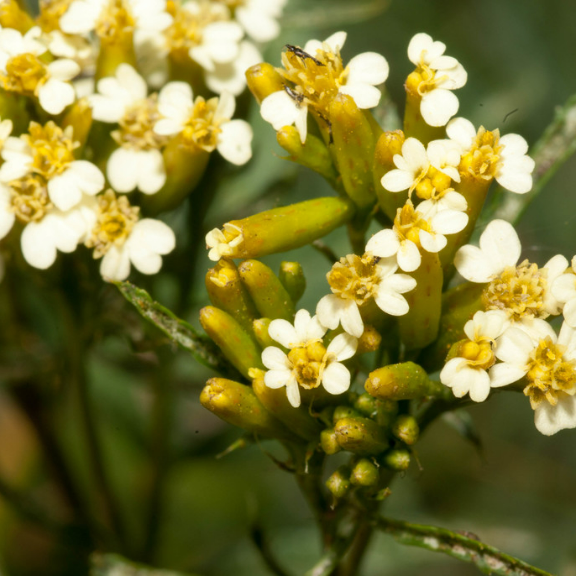Tagetes Minuta
Integrated management of sugarcane weeds:
Control on most common weeds ie narrow, broad leaved and sedges. Being a long duration and widely spaced crop, there is an ample scope of using cultural/mechanical and chemical methods in combination so as to reduce dependence on either of the methods. This includes:
i) Mechanical weed control
- Since sugarcane rows are widely spaced, shallow-rooted weeds can be managed by hoeing with hand tools or with intercultural operations during growing season of crop.
- Generally, 4-6 hand weedings are required during tillering phase of crop to check crop-weed competition.
- The removal of weeds by mechanical means is laborious and expensive, and weeds in intra-row spaces are not killed.
- Besides, sometimes due to unfavourable weather/soil conditions, mechanical weeding may not be possible.
ii) Cultural weed control
a) Crop rotation
Certain weeds have association with sugarcane crop and hence, monocropping of sugarcane may lead to severe crop-weed competition. Inclusions of green manure crops or fodder crops like sorghum not only suppress weeds but also help in crop diversification.
b) Intercropping,
Sugarcane is planted in wider-row spacing. This provides better opportunity for weeds to emerge in a large numbers and infest crop. Inclusion of short duration and quick growing intercrops in these row spaces can suppress weed growth to a great extent. Inter-row crops like mustard, potato and greengram or cowpea planted in sugarcane have been found quite effective in weed suppression and higher cane yields.
c) Mulching.
This is recommended soon after emergence of cane. Trash covers of about 10-12 cm thickness should be provided in between cane rows. Trash cover restricts sunlight and checks weed emergence. Besides, suppressing weeds, trash mulching also conserves soil moisture, and provides a potential source of organic matter.
iii) Chemical weed control.
Generally, application of single herbicide may not be effective in controlling weeds in sugarcane because of a great diversity in weed flora and a longer duration required suppressing the weeds which come in several flushes. Pre-emergence application of simazine or atrazine at 1.5-2.0 kg/ha or metribuzine at 1.0 kg/ha or diuron at 2.5-3.0 kg/ha or ametryn at 2.0 kg/ha each followed by 2, 4-D at 0.75-1.0 kg/ha as post-effective for broad-spectrum weed control in sugarcane.
Weed management in pure crop of sugarcane
- Spray Atrazine 2 kg or Oxyflurofen 750 ml/ha mixed in 500 lit of water as pre emergence herbicide on the 3rd day of planting.
- For post-emergence spray of Grammaxone 1.5 litre + 2,4-D sodium salt 2.5 kg/ha in 500 litre of water on 21st day of planting.
- If the parasitic weed striga is a problem, post-emergence application of 2,4-D sodium salt @ 1.25 kg/ha in 500 litre of water/ha may be done. 2, 4-D spraying should be avoided when neighboring crop is cotton or bhendi. Apply 20% urea also for the control of striga as direct spray.
- Pre- plant application of glyphosate at 2.0 kg ha-1 along with 2% ammonium sulphate at 21 days before planting of sugarcane.
- If herbicide is not applied work the junior-hoe along the ridges on 25, 55 and 85 days after planting for removal of weeds and proper stirring. Remove the weeds along the furrows with hand hoe. Otherwise operate power tiller fitted with tynes for intercultivation.
- Weed management in ratoon crop
- Maximum cane yield could be obtained by three-four weedings or spraying atrazine 2.0 kg/ha as pre-emergence followed by 2,4-D at 1.25 kg/ha as post-emergence at three months after harvesting followed by directed spraying of glyphosate 1.0 kg/ha at 5 months after harvesting.
Weed management in Sugarcane intercropping system
- Premergence application of Thiobencarb @ 1.25 kg a.i / ha under intercropping system insugarcane which gives effective weed control.
Pre-Emergence weed management:
Protect the sugarcane crop without weeds for 90 days from planting onwards. During 3rd or 4th day after planting spray Atrazine @ 2.5 kg/ha uniformly on the surface of field before the emergence of weeds. Chemical should be diluted in 1000liter of water and spray through hand sprayer. Separate hand sprayer and nossel should be used for herbicide application. Before application of fertilizer, weeds which are not controlled by herbicide application should be uprooted by hand weeding. By this method we can reduce the maximum level of crop damage
Post-Emergence weed management:
After the emergence of weeds, spray 2-4-D @ 2.5kg/ha to control broad leaves weed. Grass sp are controlled by hand weeding. Spraying of Ethoxy sulfuron @ 13kg/10 litre of water controls the Cyprus sp.

